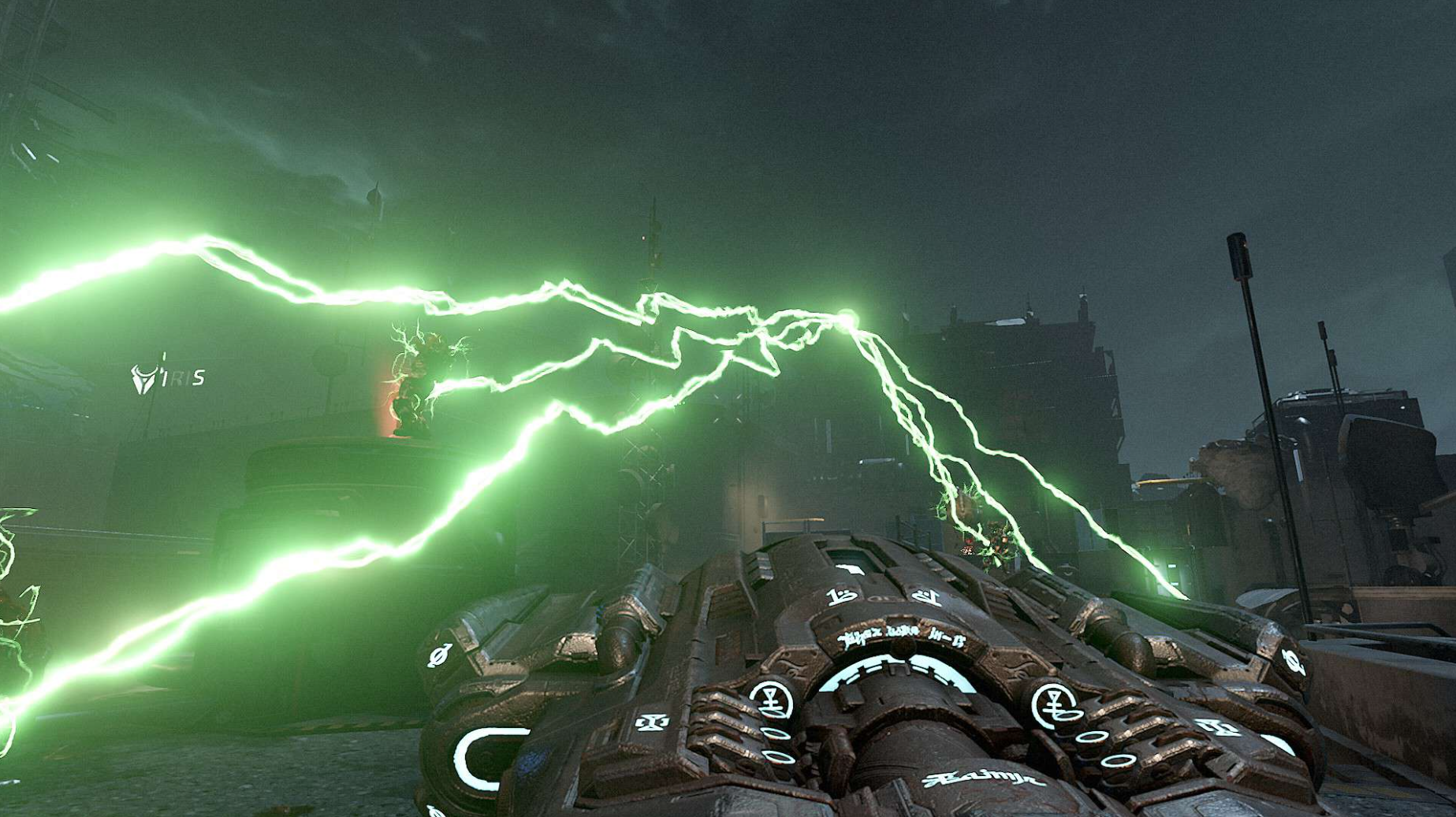Odes to the BFG
Two games, two tracks, same big freaking gun

Both Doom (2016) and Doom Eternal (2020) have their own musical takes on the BFG — complete with their own distinctly violent identities.
The BFG is undoubtedly one of, if not the most memorable weapon in gaming history. From its devastating demon-killing capability to its simple no-nonsense name, few can match the cannon from the Doom series when it comes to video game weapon design.
With that much popularity riding on its back, it was no surprise that the weapon made its return in the recent Doom games, namely the 2016 reboot and Doom Eternal. As it turned out, the weapon played a part in both games’ successes not only in its glorious in-game form, but also in shaping their soundtracks.
Part of the two Doom games’ success is due to their stellar soundtrack, done masterfully by Australian composer Mick Gordon. Gordon’s ingenuity when working on Doom’s soundtrack was well documented; from using an antique Soviet-era synthesizer for the soundtrack to implementing Satanic symbolism into a track’s spectrogram, Gordon’s work has allowed the Doom soundtrack to truly stand out among its FPS peers.
All of the “stunts” Gordon performed when composing Doom and Doom Eternal were not just for show; they were deliberate decisions made in order to extract the identity of the game into a musical form, to achieve that signature heavy-hitting feel that otherwise would not be attainable with other musical genres. And Doom’s identity is not just about near-endless demon killing; it is also about paying homage to artifacts like the BFG.
Fortunately for the Big, uh, Freaking Gun, it just so happens that the best tracks from the two games revolve around the all-powerful demon-decimating weapon.
BFG Division: Doom

Of the two BFG-centric tracks, “BFG Division” is possibly the slower of the two— and the more immediately recognizable. It has the makings of a perfect Doom background music; a guttural combination of synth melodies and heavy metal riffs complete with hard-hitting drum thumps.
During its crescendo, “BFG Division” can only be described as violence translated into music. Its rampage of multi-layered rhythms emanates raw power, signifying the Doom Slayer’s rage as he cut through the hordes of demons during his incursion in Mars and Hell.
Source: YouTube.
However, “BFG Division” would not be complete without its slow but stern opening that serves as the build up to the track’s climax, occasionally teasing listeners of the upcoming violent beats with constant aggressive synth melodies in between the relatively calm and low-key pulses.
The anticipation building went on for a little over a minute before the track finally drops, which I can only describe as immensely satisfying.
Sombre melodies hummed in the background amidst the raging heavy metal riffs sounding not too different from those found in horror movies; if it was not for the storm of heavy metal around it, the track would have simply sounded sorrowful, bleak, and blood-chilling. Except that this is the soundtrack to Doom, and instead of players facing the horrors of Hell, it was Hell facing the horror in the Doom Slayer.
The synth melody persist throughout the track as if it was constantly referencing the Doom Slayer and his terrifying aura of presence to the demons, even including the bigger ones like the Hell Knight or the Mancubus. This is a boss fight music for them with the boss in question being the Doom Slayer, especially once he gets a hold on the BFG.
On the other side of the Doom Slayer’s terrifying aura is his ferocious handiwork, which is represented by the violent heavy metal beats. In “BFG Division”, the beats are occasionally interspersed with repeated synth barrages that further cement the increasingly macabre nature of the BFG division stage, where he had to butcher his way through the demon-infested facility in order to obtain the gun, each room closer to the cannon containing more powerful fiends than the last.
Despite the terrifying picture painted by the track, “BFG Division” does not sound like a mess. To be precise, despite its chaotic arrangement, it never sounded disjointed. Both major elements that made the track, namely the melodic hums and the metal beats came together in harmony, resulting in a perfect conveying of the Doom Slayer’s significance in Doom, especially to the demons he has and has not killed.
Horror music where you are the horror. Gaming needs more of this.
BFG 10,000: Doom Eternal

Unlike its Doom (2016) counterpart with a slow start and a steady buildup, “BFG 10,000” — known colloquially as the “BFG 10k” — kicks into sixth gear from the first note. It is noticeably shorter in length and faster in pace than “BFG Division”, although that is not to say that it is merely a shorter version of its predecessor.
“BFG 10k” is hectic and fast-paced with more emphasis on accompanying the on-screen action than telling a nuanced story about the Doom Slayer. However, it has a story of its own to tell; it is definitely not lacking in the storytelling department.
Source: YouTube.
Right from the get-go, it is easy to tell that the electric guitar plays a bigger part in the track’s overall arrangement compared to the synth-heavy melody in “BFG Division”. There are even parts of the track featuring brief guitar solos without the presence of other instruments, further cementing the track’s emphasis on high-octane action.
The intense guitar riffs do not work alone, however. Strong and fast-paced drum beats complement the overall guitar melody, working in tandem elevating the track’s overall intensity. Both elements made “BFG 10k” fit perfectly into Doom Eternal, which is faster and more intense with even more demons crowding every room the Doom Slayer finds himself in.
While the track is also often segmented with synth breaks similar to “BFG Division”, the breaks are shorter in length and more scarce in frequency. Again, this plays well into the stage the track featured in, which has less downtime compared to other stages in Doom Eternal. Its intensity is almost non-stop, just like the stage it is based on.
While this demoniac back-and-forth happens through the length of the game (Super Gore Nest and the Icon of Sin comes to mind), the fight leading to BFG 10,000 virtually happens for the entire stage leaving little to no time for players to catch their breath once the Slayer steps out of the elevator. Only after the Slayer found the BFG did the fighting stop, and by then, the stage is practically finished. The unrelenting pace of the stage is also reflected in the track; even during the calmer breaks, the track does not become slower, only less intense.
Rather than telling a story of horror, “BFG 10k” tells the story of the violent exchange between the Doom Slayer and the demons he is fighting. Compared to his overwhelmingly horrifying climate in Doom, the contest between the Doom Slayer and the demons in Doom Eternal was a bit more even. It is clear that the demons have improved their ranks in quality and quantity in the second game, leading to a longer, more frenzied battle between the two parties.
Ultimately in the end, it is clear that the Doom Slayer proved to be superior to the demonic force, as evidenced by the ever-present guitar riff in the track representing him. The horde of demonic army tried to overwhelm the Doom Slayer with violence as signified in the track, but it was clear that his rage is unbridled and his brutality is unmatched, even by a bigger demonic army.
Sadly, Doom Eternal marked the last time Mick Gordon worked on the Doom franchise. From what I have listened in the soundtracks to both Doom and Doom Eternal, there is little doubt that he did a magnificent job of capturing the violent essence of Doom.
Now the task of composing future Doom projects falls on Andrew Hulshult, whose glimpses we’ve caught on Doom Eternal’s The Ancient Gods DLC. Fans have much reason to be excited; he has remade various classic Doom and Quake 2 soundtracks as well as the soundtrack for the newer Quake Champions. While the quality of Gordon’s work is indisputable, I have confidence that Hulshult is capable of producing memorable and kickass Doom soundtracks in the future.
Here is hoping he is up to the task. No pressure, Andrew.
